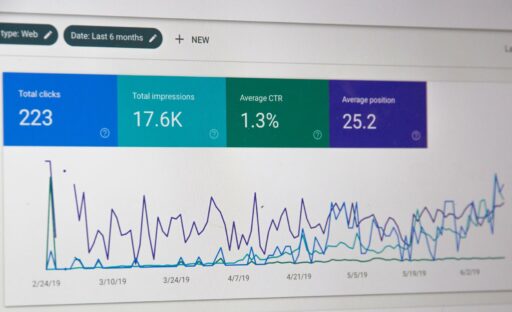In keeping with our analogy of the Internet as a digital marketplace, we’d like to clarify some things about web hosting. If your business has a website, it must be hosted, either in-house or by an external provider, in order to exist on the Internet. It’s difficult enough to choose a hosting service, much more to understand hosting terminology and operation. With this article, we hope to translate this foreign language into common sense.
Client-Server Model
Almost the entire Internet operates according to the client-server model of computer networking. In this model, client devices (PCs, phones, tablets, etc.) are connected to server devices (servers), which are powerful computers that store files, databases and websites. As in a human marketplace, all these computers are essentially talking to one another constantly, sending and receiving information. Clients make requests and servers respond to those requests. Servers can also act as clients. The client-server model organizes this traffic, which would otherwise be unmanageable.
Did you know? When you use email, visit websites and print documents, you’re sending requests to a server!
What is hosting?
Understandably, the client-server model also applies to web hosting. Hosting companies, such as BlueHost, Go Daddy!, Fat Cow, HostGator, Wix, etc., store websites on their servers. For a monthly or yearly fee, they sell you a spot on the Internet. When customers visit your website, they’re using a client device, and as they interact with the website (clicking, filling out a contact form, writing a comment, or buying a product), their device makes requests of the hosting company’s server. The server’s response may appear as something familiar on the client-side (i.e. a confirmation message) or may not be visible (i.e. making a request of a database to alter inventory).
WARNING: We strongly advise against signing up with a free web hosting service, as you will likely have to display their banner ads on your pages or post to a forum to retain your free hosting account. You will also lack your own domain name and perhaps even a legitimate website.
Mumbo-Jumbo
Before choosing a hosting service, you need to know what you want out of a service, and in order to know that, you need to understand the language of hosting, because you’ll encounter it on websites and in conversations with potential providers.
We could give you a long alphabetical list of terms, but it’s better to know the basic concepts in context and proceed from there. So here are terms you’ll most likely read and hear during your research:
- Bandwidth refers to the amount of data that can be transferred at a given moment to a server. Data is measured in bytes (KB, MB, GB, etc.). Each component of your website takes up a certain amount of disk space. Suppose the file size of your home page is 50KB. That means that every time someone visits or “hits” your home page, 50KB worth of data (i.e. bandwidth) is transferred from your website. So if you have 10 pages on your website, each with a file size of 50KB and traffic of 2000 hits, you will have used up 1GB worth of bandwidth. Web hosts will usually claim to provide “premium” bandwidth, but you shouldn’t settle for anything less than 1GB per month. New websites without Flash or software download applications will be fine with 1 to 5GB bandwidth. However, high-traffic sites would do well to have a 2000GB bandwidth. Also, beware of overage charges! If you go over your monthly bandwidth limit, you’ll be charged extra. Therefore it’s wise to estimate your bandwidth before signing up for a plan (i.e. multiply average page size by number of pages by average hits per page). If you’re unable to do an estimate, then sign up with a web host that has a web stats program, which will allow you to monitor your site traffic.
- The Cloud is a pool of highly available servers and computing services, made available for general use by web and other network-based applications. The term “cloud computing” refers to any subscription-based or pay-per-use service that extends the existing capabilities of IT in real time over the Internet.
- A control panel is a special kind of software installed for the convenience of webmasters to handle common tasks associated with web hosting accounts. Examples are cPanel and Parallels Plesk. In the control panel you can easily change your password; create email accounts, extra user accounts, passwords with varying accessibility and password protect directories; change file permissions; monitor your bandwidth and more. Control panels usually come standard with a web hosting service, so if the company you’re considering doesn’t offer one, keep looking!
- A domain name is the name of your website. As we warned earlier, your business needs to have a top-level domain name (i.e. www.mybusiness.com), not a host domain (e.g. www.mybusiness.freehost.com) in order to display credibility to your customers.
- Disk space is the amount of hard disk space your hosting company allows you to occupy on their server. Most web hosts give you far more disk space than you actually need.
- A Firewall is a piece of security software or hardware designed to protect web servers. They are typically used to protect sites from hacker attacks/unauthorized access.
- FTP stands for File Transfer Protocol, a method of allowing remote users and web servers to exchange files. After signing up with your web host, you will receive an FTP account. Using the username and password they give you, you can log in to the area of the hard disk on the web server that contains your web files. To do this, you’ll need to download a free FTP program such as FileZilla, which will let you access, upload, download, view and (if you also download an HTML editor) edit the web files stored on your web host’s server.
- HTML stands for HyperText Markup Language, the language by which web servers and client browsers communicate.
- IP stands for Internet Protocol, which designates the format of “data packets” that are used to exchange information over the Internet. An IP Address refers to a number, which is associated with every computer or machine on a network connected to the Internet.
- Load balancing involves distributing data across a network of servers in order to ensure that a single web server does not get overloaded with work, thereby affecting performance. Make sure your web host employs this technique!
- Managed backup refers to the storing of copied data on media separate from the server. This way, if the original data is damaged or lost, the data may be copied back from that source. You should make sure your web host provides this service.
- POP stands for Post Office Protocol. POP3 email accounts allow you to create and set up numerous email accounts whose addresses will read something like any_name@your_domain_name.com. Good hosting companies will offer you hundreds of email accounts (750+), as well as support for email aliases, email forwarding, autoresponders and a catch-all email account.
- Scalability refers to the ability to adapt to rapid changes in demand by dynamically adding or removing cloud resources based upon performance metrics and load thresholds. In more advanced environments, these actions are fully automated and practically instantaneous, allowing for smooth operation of services. You definitely want a scalable hosting service!
- Uptime is a measure of the time a computer has been working and available. While uptime is often used as a measure of reliability or stability, in that it represents the time a computer can be left unattended without crashing, or needing to be rebooted for administrative or maintenance purposes, a long uptime may indicate negligence, because some critical updates can require reboots on some platforms.
- Web stats usually come standard with a hosting account. With this program (e.g. Awstats), you can monitor your website’s traffic and other related details. You should also be able to update it whenever you want and keep track of visitors, visits, hits, external links, etc.
Types of Hosting
You didn’t really think there’d be only one kind of hosting, did you? Actually there are several types, each with its own merits.
- Shared hosting is the most basic and the most inexpensive of hosting alternatives. With shared hosting, you receive a bundle of services, including disk space, bandwidth, basic monitoring and POP email accounts. Unfortunately, because you’re sharing a server and Internet connection with other clients, the server can be overloaded or security compromised. If you run into a problem, the provider won’t be able to help. That’s why we only recommend shared hosting if you have non-mission critical IT needs.
- Dedicated hosting allows you to “rent” hosting equipment and connectivity from the provider. Since you generally retain control over the hosting environment and choice of operating system, you have a measure of flexibility. However, we don’t recommend this type of hosting unless you are competent in IT and server administration and can devote the time, money and human resources to the enterprise. The provider remains responsible for hardware and network administration.
- Managed hosting is a more advanced type of dedicated hosting, suitable for businesses with mission-critical websites and applications that need dedicated devices, managed backup, load balancing, advanced monitoring, managed security, data storage, premium bandwidth, service level guarantees and industry-leading technical expertise. In this environment, you are in full control of the operating systems and applications, but the provider is responsible for deploying, maintaining, and monitoring the data centers, the network, the server and other devices, all of which the provider owns. There is thus a balance of responsibilities, which allows for levels of security, scalability and uptime that far exceed basic dedicated hosting and other hosting options. The provider will foot the bill for the hardware, network and data centers, as well as regular maintenance and upgrades.
- Colocation hosting suits businesses that need complete control over their servers, but don’t want to host their servers in-house. In addition to physical space within the data center, you receive power, low-performance bandwidth, Internet connectivity, and basic server availability monitoring. Beyond that, you’re responsible for purchasing, configuring, deploying, and maintaining the physical hardware (servers, firewalls, etc.), software, and operating system. As a result you must have a lot of time and IT competence. The provider will charge you for support, if they offer it.
- Cloud hosting uses architectures that can quickly scale to suit user demand and traffic spikes. Instead of wrestling with the underlying infrastructure and core technologies or the day-to-day operational, performance and scalability issues of their platform, businesses can truly focus their resources on developing their applications and sites. Since cloud hosting is relatively new, make sure you find a proven cloud hosting provider with a stable infrastructure.
Web Hosting with SGD
While we admit we’re not solely dedicated to web hosting, we do provide hosting services to our clients in order to keep their newly designed websites safe, secure and at the top of their game for years to come!
Author

James Fulton
Since founding the company in 2012, James has been the driving force behind SGD's success. As a visionary leader, he guides the SGD team, encouraging them to continually excel in digital design. James inspires a culture of growth, challenging each team member to surpass their own limits and set new standards in the field. This commitment to excellence not only propels personal development but also ensures SGD consistently delivers exceptional results for its clients.
Unlock Weekly Insights To Improve Your Website
Want to improve your website and digital marketing? Sign up to Marketing Monday for practical, up-to-date strategies on SEO, Google Ads, and website performance—delivered weekly.
No fluff, just results-driven advice. Unsubscribe anytime.
Next Article
Stand Out from the Crowd with SGD
August 13, 2014Start a Project









